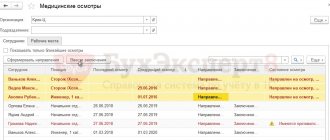General rules
According to paragraph 6 of Article 171 of the Tax Code of the Russian Federation, during capital construction, tax amounts that are presented to the taxpayer in the following cases are subject to deductions:
- when he acquires objects of unfinished capital construction;
- when he purchases goods, works or services necessary to perform construction and installation work;
- when work on the construction or liquidation, installation or dismantling, assembly or disassembly of fixed assets is carried out by a contractor, and he submits VAT to the taxpayer.
If contractors and suppliers present VAT directly to the taxpayer, then the deduction is made in accordance with the general procedure. To do this, three conditions must be met:
- the construction project is intended for VAT-taxable activities;
- the taxpayer has registered purchased goods, works or services for which he intends to claim a deduction;
- suppliers and contractors prepared and handed over to the taxpayer invoices with VAT amounts allocated in them.
Let us remind you that in addition to the official form of the invoice approved by Government Decree No. 1137, companies can use a universal transfer document compiled on its basis (letter of the Federal Tax Service of Russia dated October 21, 2013 No. ММВ-20-3 / [email protected] ).
Costs associated with the work
In the process of performing work, the contracting organization bears costs.
Such expenses, in particular, include the cost of purchasing materials necessary to complete the work, paying wages to employees, transportation costs, etc.
Tax consequences
VAT
VAT paid on the purchase of materials, etc., can be deducted by the contractor if the necessary conditions are met, that is, if the materials are purchased for activities subject to VAT, an invoice is received from the supplier of the materials and the materials are registered.
Income tax
Expenses associated with the performance of work are reflected in the contractor's tax records as follows.
A contractor who uses the accrual method and whose expenses are divided into direct and indirect, assigns direct expenses to the current expenses of the reporting (tax) period in which revenue from the work is recognized. In this case, indirect expenses in full relate to the expenses of the reporting (tax) period in which they were incurred (clause 2 of Article 318 of the Tax Code of the Russian Federation).
A contractor using the cash method recognizes costs associated with the performance of work as expenses after their actual payment, regardless of the recognition of revenue from the work (clause 3 of Article 273 of the Tax Code of the Russian Federation).
If a construction contract has been drawn up
The construction contract may stipulate that the object is transferred to the customer upon completion of all construction work or in stages. However, in practice, there are often cases when, despite the absence of stage-by-stage delivery provisions in the contract, the customer transfers payment to the contractor periodically, for example, monthly. The basis for this is acceptance certificates in form KS-2 and certificates in form KS-3, as well as invoices issued by the contractor.
Meanwhile, by paying the contractor in the manner indicated above, the customer may lose the right to apply VAT deductions until the entire scope of work is accepted. From the provisions of paragraph 1 of Article 172 of the Tax Code of the Russian Federation, it follows that VAT submitted by the contractor can be deducted on the basis of an issued invoice after the work performed by him has been accepted for accounting. It is at the moment of taking into account the work performed by the contractor that the problem lies, which makes the deduction of “contract” VAT in this case risky.
The fact is that the tax legislation does not directly explain what is meant by the registration of a contractor’s work. Law No. 402-FZ “On Accounting” requires accounting to be based on federal and industry standards, but they are not yet available. Thus, based on paragraph 1 of Article 30 of Law No. 402-FZ, it is necessary to rely on the accounting rules approved by the Ministry of Finance before January 1, 2013. Let's turn to PBU 10/99 “Expenses of the organization”. According to the document, expenses must entail a decrease in the economic benefits of the organization, and such certainty exists in the case where there is no uncertainty regarding the transfer of the asset.
It turns out that before the results of the work are transferred by the contractor to the customer, the latter cannot take them into account. At the same time, forms KS-2 and KS-3 cannot be considered as acts of stage-by-stage acceptance of work performed, but are only settlement documents for advance payment. This is stated in the letter of the Federal Tax Service of Russia dated July 2, 2013 No. OA-4-13/ [email protected] , as well as in the information letter of the Presidium of the Supreme Arbitration Court of the Russian Federation dated January 24, 2000 No. 51.
Since the customer cannot accept the results of the work for accounting on the basis of these acts, then he also does not have the right to claim the deduction of VAT from the costs of paying for these works. Such conclusions correspond to the position of the Ministry of Finance, expressed, for example, in letter dated March 5, 2009 No. 03-07-11/52 and others. Department specialists point out that deduction of “contract” VAT is possible only when the customer takes into account the results of work in the amount specified in the construction contract.
However, in judicial practice there are cases when arbitrators took the side of customers who deducted VAT in this situation (resolution of the Moscow District dated April 19, 2012 in case No. A40-77285/11-107-332). Thus, if there is no provision in the construction contract for the phased acceptance of work, the customer may claim VAT deductions before the entire scope of work is registered at his own peril and risk. In this case, there is a high chance that the Federal Tax Service will not agree with the taxpayer, and he will have to defend his position in court.
Elimination of deficiencies in completed work
Sometimes, after completion of the work, the customer identifies shortcomings in the work performed and turns to the contractor with a demand to eliminate them. As a rule, the contractor eliminates these deficiencies free of charge. As a result of performing such work, he is faced with two questions: is it necessary to calculate VAT on the cost of gratuitous work and can the costs associated with the performance of this work be taken into account when taxing profits?
Tax consequences
VAT
In this case, the object of VAT taxation does not arise. The fact is that by eliminating deficiencies free of charge, the contractor, in fact, fulfills the obligations assumed under the contract. In turn, the cost of work under this agreement is already included in the VAT tax base. Therefore, there is no need to charge and pay VAT on the cost of “corrective” work.
Income tax
As for the recognition for profit tax purposes of the costs incurred by the contractor when carrying out work to eliminate deficiencies, they can be included in expenses in tax accounting on the basis of subparagraph 47 of paragraph 1 of Article 264 of the Tax Code of the Russian Federation as losses from defects.
If the object is being built under an investment agreement
When concluding an investment agreement, tax amounts are presented not to the investor, but to the intermediary (customer), who organizes the construction process. Chapter 21 of the Tax Code does not contain the procedure for applying the deduction when concluding an investment agreement, which gives rise to the existence of different points of view on the very possibility of its application.
Some experts believe that since investment activities are not subject to VAT, the investor does not have the right to deduction. Investors attribute the “input” VAT to the cost of the capital construction project. This position is supported by some courts (resolution of the Federal Antimonopoly Service of the Volga-Vyatka District dated March 10, 2006 in case No. A29-502/2005).
According to another point of view, only the transfer of property that is of an investment nature is not subject to VAT, while construction operations for the implementation of this investment project, which are paid by the investor, are subject to taxation. In accordance with this position, the “input” VAT that the investor transfers to the customer can be deducted.
The customer carrying out activities under an investment agreement is, in fact, an intermediary between the investor and contractors (suppliers). The funds he receives from the investor are a source of targeted financing and are not subject to VAT. However, costs incurred by the customer to contractors and suppliers generally include VAT. When the customer transfers the result of construction to the investor, there is no VAT subject to taxation, since there is no fact of sale (ownership of the constructed object initially belongs to the investor). In this case, the object is transferred at its actual cost, including VAT.
The fact that the tax amounts presented by suppliers and contractors to the developer can be transferred by the latter to the investor is confirmed by the Presidium of the Supreme Arbitration Court of the Russian Federation (resolution dated June 26, 12 in case No. A38-1216/2011). This is done on the basis of a consolidated invoice, which is drawn up by the customer to the investor.
Costs associated with the work
In the process of performing work, the contracting organization bears costs.
Such expenses, in particular, include the cost of purchasing materials necessary to complete the work, paying wages to employees, transportation costs, etc.
Tax consequences
VAT
VAT paid on the purchase of materials, etc., can be deducted by the contractor if the necessary conditions are met, that is, if the materials are purchased for activities subject to VAT, an invoice is received from the supplier of the materials and the materials are registered.
Income tax
Expenses associated with the performance of work are reflected in the contractor's tax records as follows.
A contractor who uses the accrual method and whose expenses are divided into direct and indirect, assigns direct expenses to the current expenses of the reporting (tax) period in which revenue from the work is recognized. In this case, indirect expenses in full relate to the expenses of the reporting (tax) period in which they were incurred (clause 2 of Article 318 of the Tax Code of the Russian Federation).
A contractor using the cash method recognizes costs associated with the performance of work as expenses after their actual payment, regardless of the recognition of revenue from the work (clause 3 of Article 273 of the Tax Code of the Russian Federation).
The procedure for drawing up and recording a consolidated invoice
So, in order to pass on the input VAT to the investor, the customer must draw up a consolidated invoice. This is done on the basis of invoices received by the customer from suppliers and contractors, and purchased construction and installation works and goods are allocated as a separate item.
It should be noted that the legislation has never introduced such a document as a consolidated invoice. This so-called concept document was proposed by the Ministry of Finance in 2006. Its introduction was caused by a surge in investment activity. And for 10 years now, developers have been drawing up a consolidated invoice to investors in order to transfer the “input” VAT to them.
The consolidated invoice is drawn up in two copies. The first of them is transferred to the investor - it is on its basis that VAT is accepted for deduction. Along with it, the investor must receive copies of invoices that suppliers and contractors issued to the customer, as well as copies of primary documents accompanying the operations. The investor registers a consolidated invoice in the purchase ledger and reflects it in the Journal of Issued and Received Invoices.
As for the customer, he reflects his copy of the consolidated invoice in the first part of the Journal. Please note that this document is not reflected in the sales book.
The customer issues a separate invoice to the investor for the amount of his remuneration - it is not included in the summary document. The developer must reflect this invoice not only in the Invoice Journal, but also in the sales book.
Elimination of deficiencies in completed work
Sometimes, after completion of the work, the customer identifies shortcomings in the work performed and turns to the contractor with a demand to eliminate them. As a rule, the contractor eliminates these deficiencies free of charge. As a result of performing such work, he is faced with two questions: is it necessary to calculate VAT on the cost of gratuitous work and can the costs associated with the performance of this work be taken into account when taxing profits?
Tax consequences
VAT
In this case, the object of VAT taxation does not arise. The fact is that by eliminating deficiencies free of charge, the contractor, in fact, fulfills the obligations assumed under the contract. In turn, the cost of work under this agreement is already included in the VAT tax base. Therefore, there is no need to charge and pay VAT on the cost of “corrective” work.
Income tax
As for the recognition for profit tax purposes of the costs incurred by the contractor when carrying out work to eliminate deficiencies, they can be included in expenses in tax accounting on the basis of subparagraph 47 of paragraph 1 of Article 264 of the Tax Code of the Russian Federation as losses from defects.



